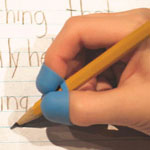Special Education Is Needed For Learning Disabilities
 All children deserve a good education and those with learning disabilities are no exception. Parents and teachers have to strive extra hard to make lessons meaningful and fun for these children. Merely looking at words and writing them out will not help.
All children deserve a good education and those with learning disabilities are no exception. Parents and teachers have to strive extra hard to make lessons meaningful and fun for these children. Merely looking at words and writing them out will not help.
All senses have to be included in the effort to help in retention of the lessons learnt. For example, when the alphabet is taught, just writing on paper with a pencil is not sufficient. Clay or plasticine should be used to form the letter. A large board can be placed in the class room and the children can write on it with a marker. While on the playground learning can be reinforced by tracing out the letters learnt in the mud with a stick. When on a beach they can be written in the sand. As the letters are being written ask the child to say them out loud. This will involve more than one sense and will help the child to remember it.
When cursive writing is introduced the teacher can write the words on the arm of the child. Another method is to ask the child to close his eyes and form the words in the air with his hand. Rhythmic activity is another useful tool. Clapping, music, dance or some movement will introduce an element of fun and help the child to remember what he/she has learnt.
All the lessons must be broken down into shorter modules and repeated often. The children should not feel overwhelmed and burdened with learning. After completing a small portion older children can be encouraged to review previous portions on their own.
Children with learning disabilities require a lot of repetition and the teacher has to be very patient and creative. She can make paper models and drawings to add clarity to her lessons. The child can also be asked to illustrate a story or poem the teacher is telling. This will make the child concentrate and visualise what is being said. The child can be asked to draw a picture of the apple he is eating. Tell him to colour it and write its name as well. So now he will be seeing, tasting, drawing and learning about colour and alphabet. When these methods are used in storytelling, then do so in small steps. Speak out a sentence or so and let the child draw using his imagination his interpretation. There can be no hard and fast rules in this.
In spite of all these efforts if the children are unable to progress satisfactorily in usual schoolwork, importance and encouragement should be given to sports, music, art and such related activities. Opportunity should be given to them to do well in any such field so that they feel good about themselves and are able to hold their head high.